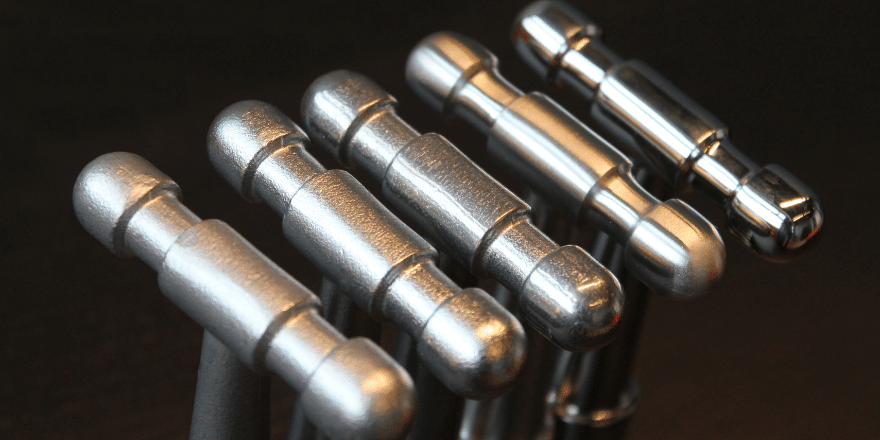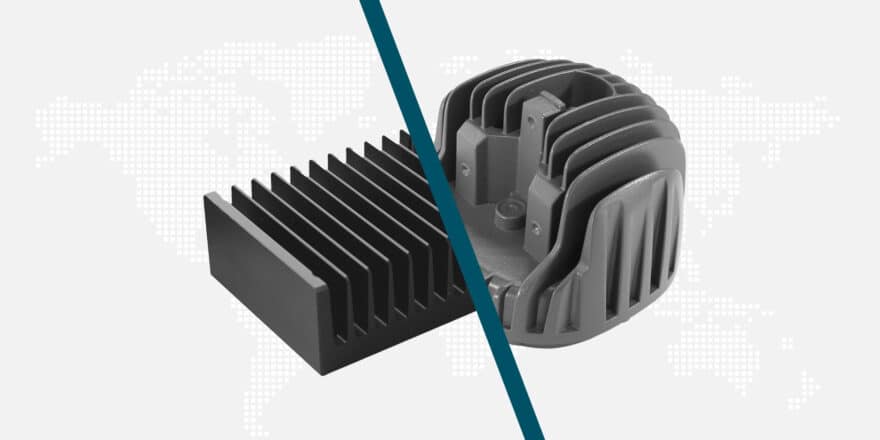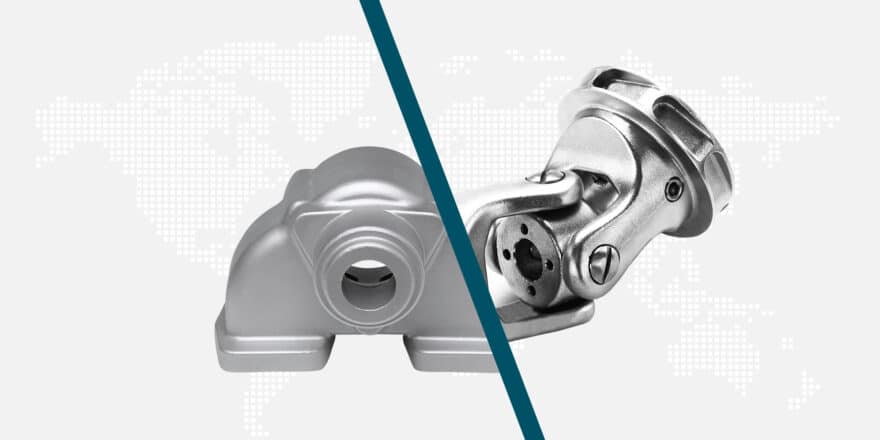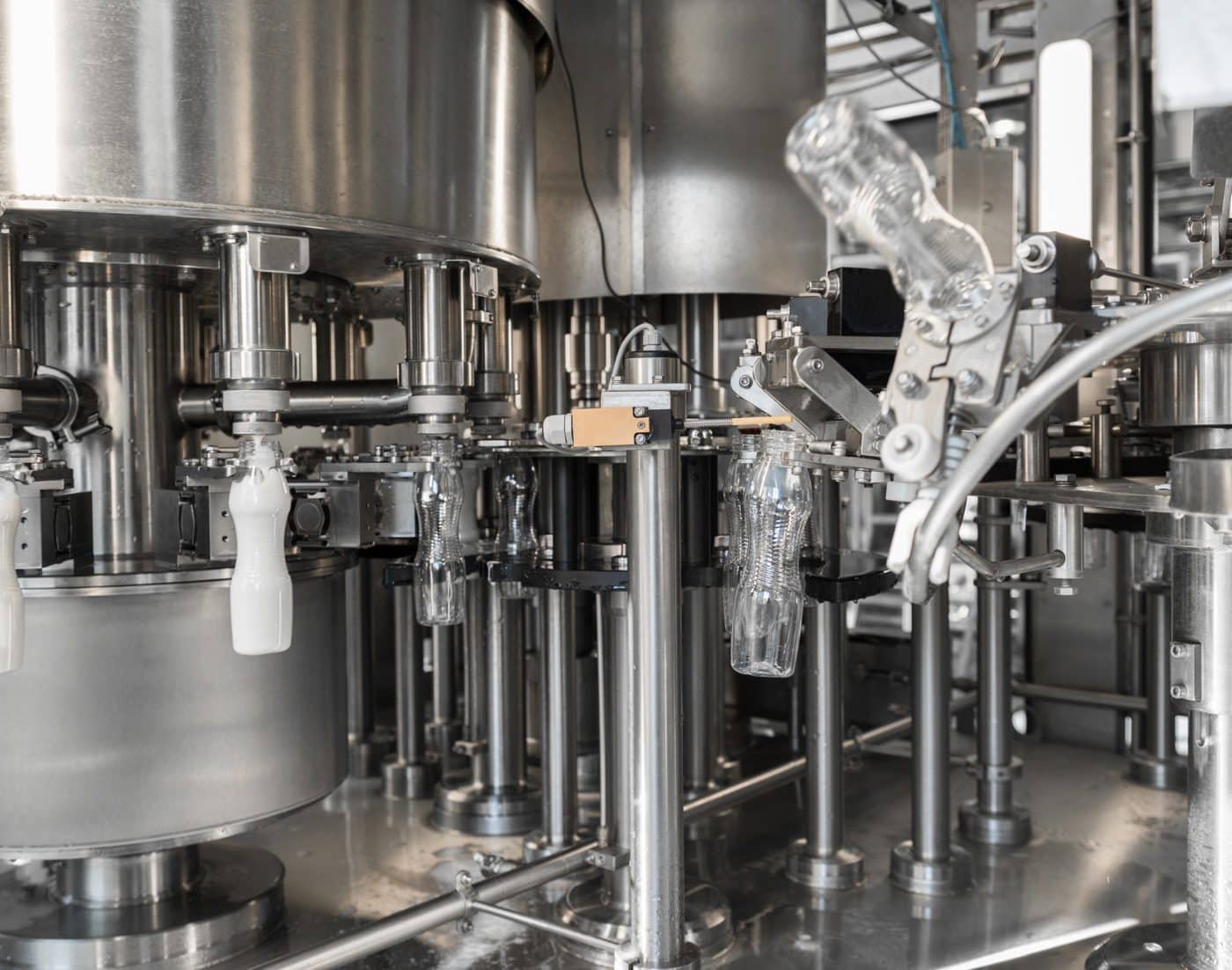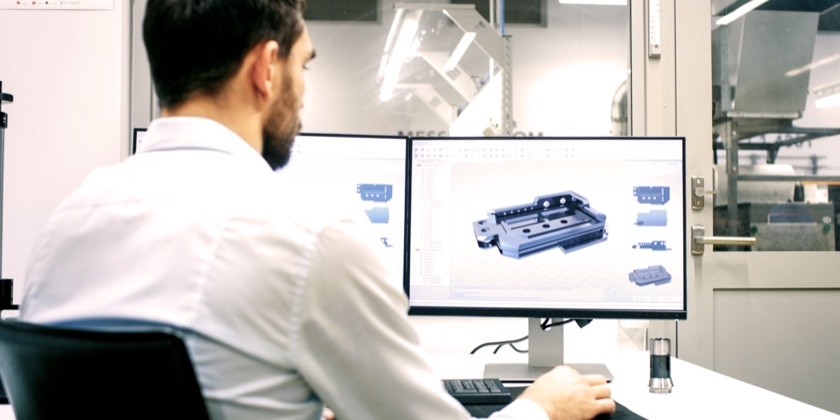
CASTING DESIGN GUIDELINES: HOW TO ACHIEVE AN OPTIMAL CAST COMPONENT?
Designing optimal cast components requires a thorough knowledge of material behaviour, casting processes and design principles. Following the right guidelines can significantly improve the quality, functionality and manufacturability of cast components. Here is an overview of essential design guidelines for castings.
ELCEE’s engineers have years of experience in transforming welded structures into cost-effective casting design. In this article, you will read some of their tips to achieve an optimal component. Are you interested in a personal discussion right now? Then contact us directly.
WALL THICKETS
Consistent wall thicknesses promote even cooling and reduce the risk of internal stresses and deformations. If a product needs extra strength in certain areas, reinforcement ribs can be used.
When designing wall thicknesses, it is important to:
- Avoid abrupt transitions
- Apply gradual changes in thickness
- Use strengthening ribs for additional strength rather than locally thicker walls
SURFACE ROUGHNESS
A variety of options is also possible here, depending on the casting process and surface treatment chosen, it is possible to choose between a technically functional or optically important appearance.
RADII AND ROUNDINGS
Applying radii and rounding improves fluid flow during casting, a more even solidification process and reduces stress concentrations in the final product. Depending on the casting process, the ideal rounding and or achievable inner and outer radii vary.
UNLOADING ANGLES
Proper discharge angles ensure easy removal of the casting from the mould. The recommended minimum unloading angles vary depending on the material and casting process. The lost wax production process, for example, needs virtually no discharge angles. While sand casting and aluminium die casting do require it. Even in one casting, different discharge angles can be applied. Deeper cavities or cores may require larger discharge angles.
PARTLINE
As mentioned earlier, some manufacturing processes require unloading angles. The parting line, where the two halves of the mould meet, should be carefully designed:
- Aim for a simple, preferably flat dell line.
- In case of a staggered part line, ensure a minimum angle of 5° where the line staggered
- Preferably place the part line at a corner of the casting to minimise visibility
TOLERANCES
Accurate tolerances are essential for the functionality and assemblability of castings. Per casting process, the tolerances to be achieved vary:
- Clearly specify functional dimensions and tolerances on technical drawings
- Take into account the different tolerances for form-bound and non-form-bound dimensions
By following these guidelines and working closely with experienced casting specialists, the quality, functionality and manufacturability of casting components can be optimised. It is important to incorporate these principles early in the design process to avoid costly modifications at later stages.
GET IN TOUCH
Engineering a casting requires specialist knowledge and experience. At ELCEE, we have a team of experts who work daily on various mechanical component designs. We are ready to help you with your specific challenges, or we can take over the work completely for you. Would you like to know more? Then contact us for a personal discussion.


